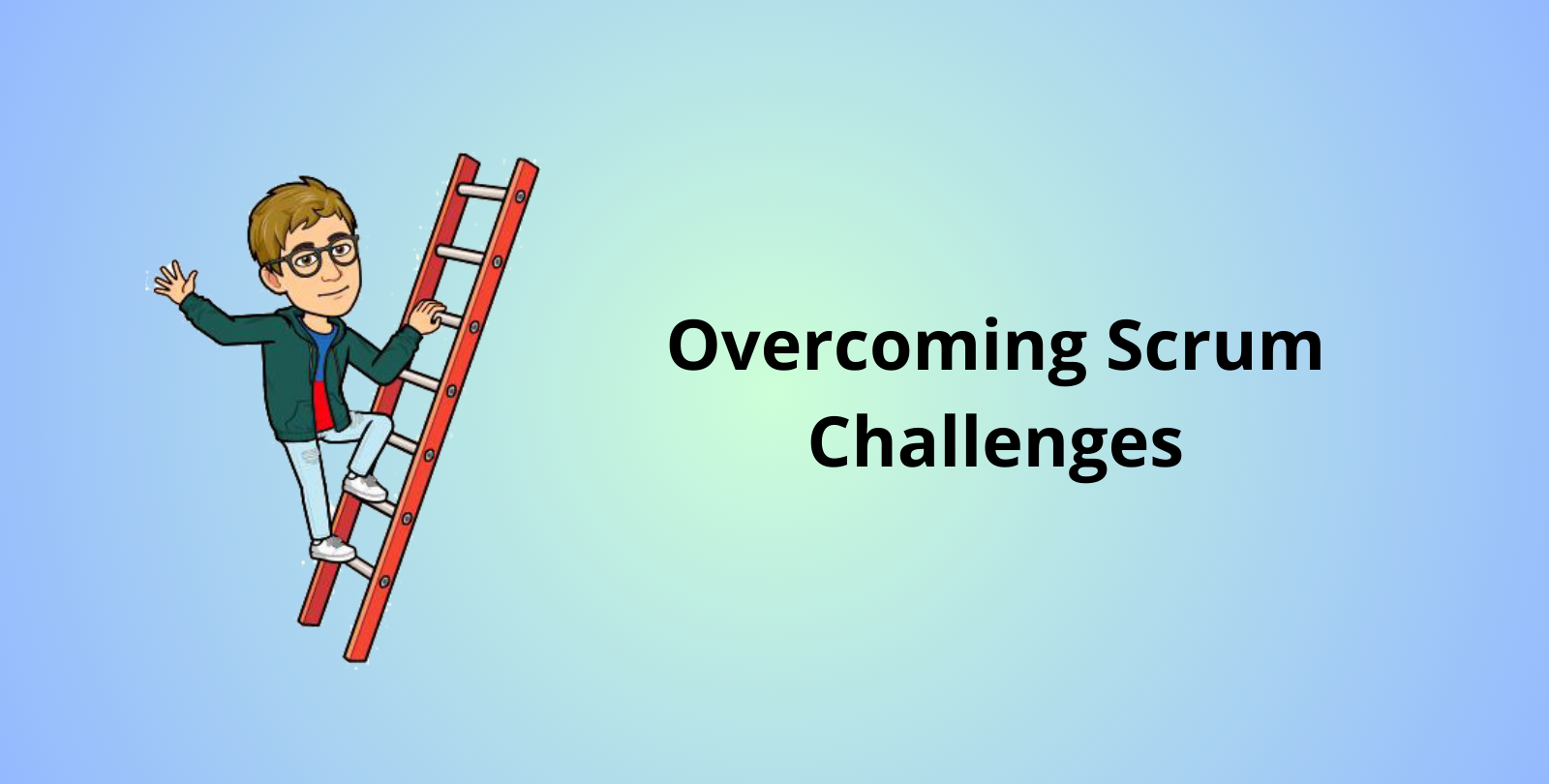Overcoming Common Challenges as a Scrum Master
 Developer Fabio
Developer Fabio
In the realm of agile software development, the Scrum Master plays a vital role in ensuring the success of the team and the project.
In this article, we will explore common challenges that a Scrum Master may encounter, such as resistance to change, stakeholder management, and conflict resolution. We will also analyze the importance of addressing these challenges effectively to ensure the success of the team and the project.
Strategies for Overcoming Resistance to Change
Resistance to change is a common challenge for Scrum Masters when implementing new practices. Here are some effective strategies:
1. Clear Communication
Effective communication is crucial in addressing resistance to change. To communicate the benefits of Scrum practices effectively:
Articulate the Value: explain how the new practices will enhance performance and outcomes with specific examples.
Be Transparent: Share the reasons behind the change and the expected benefits. Transparency helps build trust and reduces uncertainty.
Address Concerns: Listen to team members’ concerns and provide clear, honest answers. Acknowledging and addressing concerns can help alleviate fears and build support.
2. Team Involvement
Involving the team in the change process can significantly reduce resistance.
Seek Input: Involve team members in discussions about the change. Solicit their feedback and incorporate their suggestions where possible.
Empower Team Members: Allow team members to take ownership of aspects of the change process. Empowering them can increase their commitment and reduce resistance.
Foster Collaboration: Create opportunities for team members to collaborate and share their thoughts on the change. Collaborative discussions can lead to a shared understanding and support.
3. Incremental Implementation
Implementing changes gradually can help ease the transition and reduce resistance. Here’s how to approach incremental implementation:
Start Small: Begin with small, manageable changes rather than overhauling everything at once. This allows the team to adapt gradually and reduces the risk of overwhelming them.
Monitor Progress: Regularly assess the impact of the changes and make adjustments as needed. Monitoring progress helps ensure that the changes are effective and that any issues are addressed promptly.
Celebrate Milestones: Recognize and celebrate successes and milestones achieved during the change process. Celebrating progress helps maintain morale and reinforces the benefits of the new practices.
Techniques for Effective Stakeholder Management
Effective stakeholder management is crucial for the success. It involves balancing the needs and expectations of various stakeholders with the goals of the Scrum team. Here are some techniques to manage stakeholders effectively:
1. Expectation Management
Managing stakeholder expectations starts with setting clear and realistic goals from the beginning. To achieve this:
Define Objectives Early: Clearly outline project objectives and deliverables. Ensure that stakeholders understand what can be realistically achieved within the given constraints.
Set Realistic Timelines: Provide accurate timelines and milestones for project deliverables. Avoid over-promising and ensure that stakeholders have a realistic view of the project's progress and potential challenges.
Align Expectations: Regularly review and align expectations with stakeholders to ensure that they remain realistic and achievable throughout the project lifecycle.
2. Transparent Communication
Effective communication is key to managing stakeholder relationships. To maintain transparency:
Regular Updates: Provide consistent updates on project status, progress, and any changes.
Honest Reporting: Be transparent about challenges, risks, and issues. Honest reporting helps build trust and allows stakeholders to make informed decisions.
Feedback Mechanism: Implement a feedback mechanism to gather stakeholder input and address any concerns or suggestions they may have. This shows that their opinions are valued and considered.
3. Negotiation and Compromise
Balancing stakeholder requests with team priorities often requires negotiation and compromise. To effectively manage this balance:
Understand Stakeholder Needs: Take the time to understand the needs and priorities of different stakeholders.
Negotiate Solutions: Engage in constructive negotiations to find solutions that address both stakeholder needs and team priorities. Look for win-win scenarios where possible.
Prioritize Requests: Work with stakeholders to prioritize their requests and align them with the project's goals and constraints.
Approaches for Resolving Team Conflicts
Conflicts within a team can hinder productivity and affect morale. As a Scrum Master, addressing and resolving these conflicts effectively is crucial for maintaining a positive and collaborative work environment. Here are some key approaches to resolving team conflicts:
1. Active Listening
Active listening is essential in understanding the root causes of conflict and finding effective solutions. To practice active listening:
Give Full Attention: Focus fully on the speaker, avoiding interruptions or distractions. This shows respect and helps in understanding their perspective.
Ask Clarifying Questions: Use open-ended questions to gain a deeper understanding of the issues. Clarify any points that are unclear to ensure a complete grasp of the situation.
Reflect and Summarize: Paraphrase and summarize what has been said to confirm understanding. This demonstrates that you are listening and helps in validating the concerns of all parties involved.
2. Facilitated Discussions
Facilitated discussions can help resolve conflicts by encouraging open dialogue and collaboration. To guide these discussions effectively:
Set Ground Rules: Establish clear ground rules for the discussion, such as respecting others' viewpoints and avoiding personal attacks. This helps in maintaining a constructive atmosphere.
Encourage Participation: Ensure that all parties have an opportunity to express their views and concerns. Encourage active participation from everyone involved in the conflict.
Focus on Common Goals: Redirect the discussion towards shared objectives and interests. Emphasizing common goals helps in finding mutually agreeable solutions.
3. Solution-Focused
A solution-focused approach helps in addressing conflicts by concentrating on actionable solutions rather than dwelling on the problems. To apply this approach:
Identify Potential Solutions: Brainstorm and discuss possible solutions to the conflict. Encourage creativity and openness to various options.
Evaluate Solutions: Assess the feasibility and potential impact of each proposed solution. Consider how each option aligns with the team’s goals and priorities.
Implement and Monitor: Choose the most viable solution and implement it. Monitor the results and make adjustments as needed to ensure that the solution effectively addresses the conflict.
Conclusion
Navigating the challenges of a Scrum Master is vital for team success. By addressing resistance to change with clear communication and incremental adjustments, managing stakeholder expectations through transparency and negotiation, and resolving team conflicts with active listening and solution-focused approaches, Scrum Masters can significantly enhance team performance.
Implementing these strategies effectively ensures smoother transitions, better alignment, and a collaborative work environment, driving both project success and ongoing improvement.
Subscribe to my newsletter
Read articles from Developer Fabio directly inside your inbox. Subscribe to the newsletter, and don't miss out.
Written by

Developer Fabio
Developer Fabio
I'm a fullstack developer and my stack is includes .net, angular, reactjs, mondodb and mssql I currently work in a little tourism company, I'm not only a developer but I manage a team and customers. I love learning new things and I like the continuous comparison with other people on ideas.